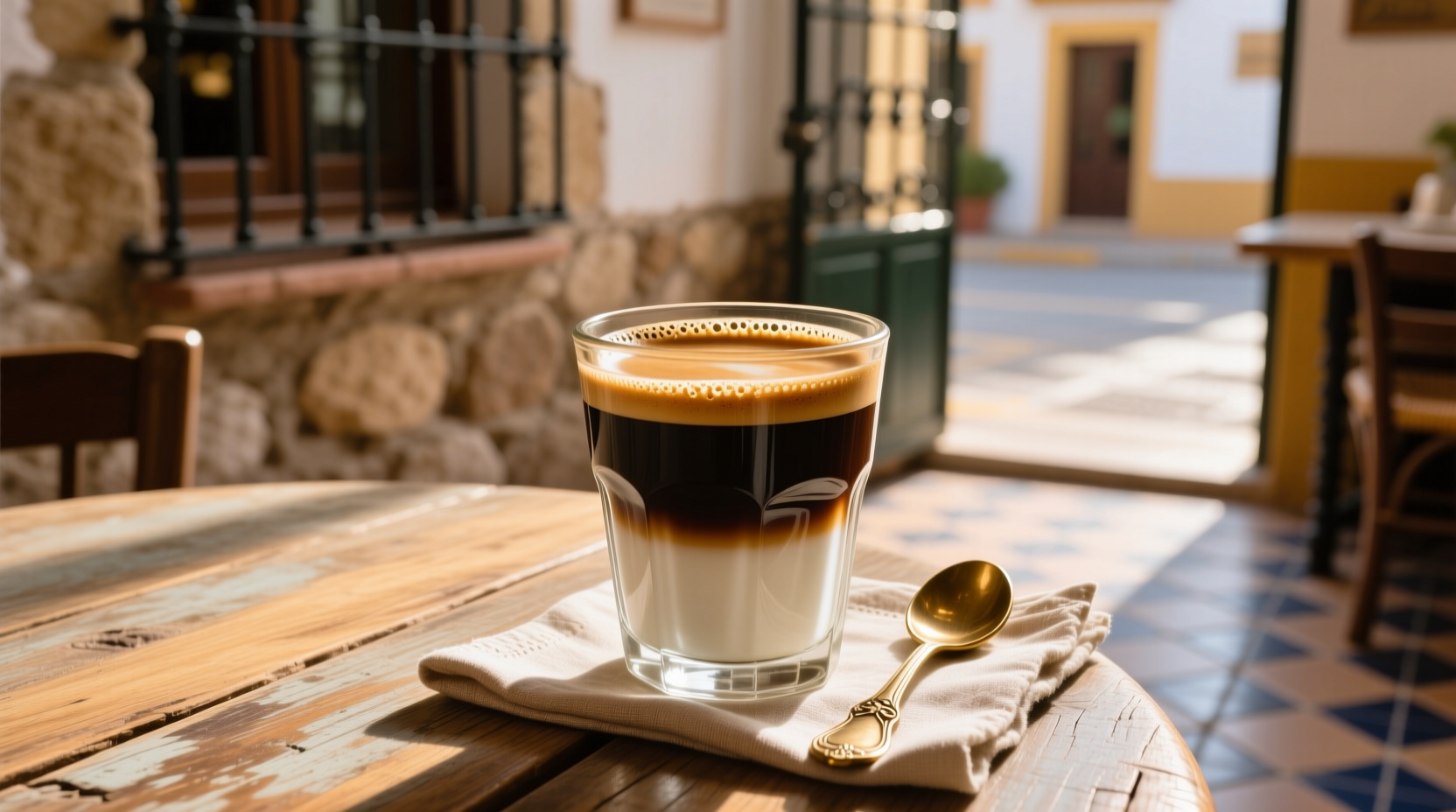Ever wonder what makes a cortado stand out in the crowded coffee menu? This Spanish-born beverage offers a distinctive middle ground between straight espresso and milk-heavy coffees. Unlike its foamier cousins, a cortado maintains espresso's essential character while introducing just enough milk to soften harsh edges. The magic happens through a precise 1:1 ratio that creates harmony between bold coffee notes and the natural sweetness of properly steamed milk.
Understanding the Cortado's Flavor Architecture
At its core, a cortado showcases how minimal intervention can elevate coffee appreciation. The drink's name comes from the Spanish "cortar" (to cut), referring to how the milk "cuts" the espresso's acidity. This isn't about masking coffee flavor but rather revealing its most approachable expression.
When properly prepared, you'll first notice the aroma—intense coffee notes mingled with the comforting scent of warm milk. The initial sip delivers espresso's characteristic richness, immediately followed by milk's subtle sweetness that rounds out any sharp bitterness. The finish remains clean and coffee-forward, unlike lattes where milk often dominates.
| Coffee Drink | Espresso:Milk Ratio | Texture | Flavor Profile |
|---|---|---|---|
| Cortado | 1:1 | Smooth, minimal microfoam | Espresso-forward, balanced sweetness |
| Cappuccino | 1:2 | Thick, airy foam | Milk-dominant, mild coffee |
| Flat White | 1:1.5 | Silky microfoam | Integrated coffee-milk harmony |
| Macchiato | 1:0.25 | Minimal foam | Strong espresso with slight softening |
Why Cortado's Taste Stands Apart
The cortado's unique flavor profile emerges from specific preparation techniques that distinguish it from similar drinks. Traditional cortados use a Gibraltar glass that maintains optimal drinking temperature—hot enough to enjoy aromatics but cool enough to prevent scalding your tongue and masking subtle flavors.
Coffee professionals at the Specialty Coffee Association note that the ideal cortado temperature sits between 130-140°F (54-60°C), preserving volatile flavor compounds that evaporate at higher temperatures. This precise temperature control allows you to detect nuanced tasting notes that might include:
- Dark chocolate undertones from quality medium-dark roasts
- Subtle caramel sweetness from milk's lactose interacting with coffee acids
- Citrus or berry hints from specialty single-origin beans
- A clean finish without lingering bitterness

Factors That Shape Your Cortado Experience
Several elements influence how your cortado tastes, creating natural variations while maintaining the drink's essential character:
Coffee Bean Selection
Baristas typically choose medium-dark roasted beans with balanced acidity. According to coffee sensory analysis research published by the Specialty Coffee Association, beans with chocolatey or nutty profiles work best as they complement rather than compete with milk's natural sweetness.
Milk Transformation
The milk in a cortado undergoes minimal steaming—just enough to reach optimal temperature without creating significant foam. This preserves milk's natural sugars while avoiding the caramelization that occurs in more heavily steamed milks. The result is a clean sweetness that enhances rather than masks coffee flavors.
Context Boundaries: When Taste Varies
While the cortado formula remains consistent, your experience may differ based on several factors:
- Regional interpretations: In Spain, cortados often use condensed milk for added sweetness, while American versions stick to traditional steamed milk
- Bean freshness: Coffee roasted within the past 2-3 weeks delivers optimal flavor complexity
- Milk alternatives: Oat milk creates a creamier texture with cereal notes, while almond milk introduces nuttiness that competes with coffee flavors
- Serving temperature: Above 145°F (63°C), you'll lose subtle flavor notes and experience increased bitterness
Perfect Pairing Opportunities
The cortado's balanced profile makes it exceptionally food-friendly. Its moderate intensity works well with:
- Simple pastries like croissants or biscotti that don't overwhelm the coffee
- Dark chocolate (70% or higher) that complements rather than competes
- Light breakfast items where strong coffee would dominate
- As an afternoon pick-me-up when you want coffee flavor without espresso's intensity
Unlike milk-heavy coffees that require sugary accompaniments, the cortado's natural balance often needs no added sweetener. This makes it ideal for those developing their coffee palate who want to appreciate beans' inherent qualities.
How to Truly Taste a Cortado
To maximize your cortado experience, follow these professional tasting techniques:
- Smell first: Inhale deeply before sipping to activate your olfactory receptors
- Sip slowly: Let the liquid coat your tongue to detect flavor layers
- Notice temperature changes: Flavor perception shifts as the drink cools
- Pay attention to aftertaste: Quality cortados leave a pleasant, coffee-forward finish
Baristas at leading coffee institutions like the Barista Guild recommend taking small sips every 30 seconds to experience how flavor notes evolve as the drink cools from optimal drinking temperature to room temperature.
When a Cortado Might Not Suit Your Taste
While versatile, the cortado isn't ideal for everyone. Consider these scenarios:
- If you prefer heavily sweetened coffee drinks, you might find cortados too subtle
- Those seeking intense espresso punch may want a straight shot or macchiato
- When you want a large, milk-forward beverage for extended sipping
- If you're specifically looking for substantial foam texture
Understanding these boundaries helps set proper expectations for your coffee experience. The cortado shines when you want to appreciate quality coffee with just enough milk to soften its edges.











 浙公网安备
33010002000092号
浙公网安备
33010002000092号 浙B2-20120091-4
浙B2-20120091-4